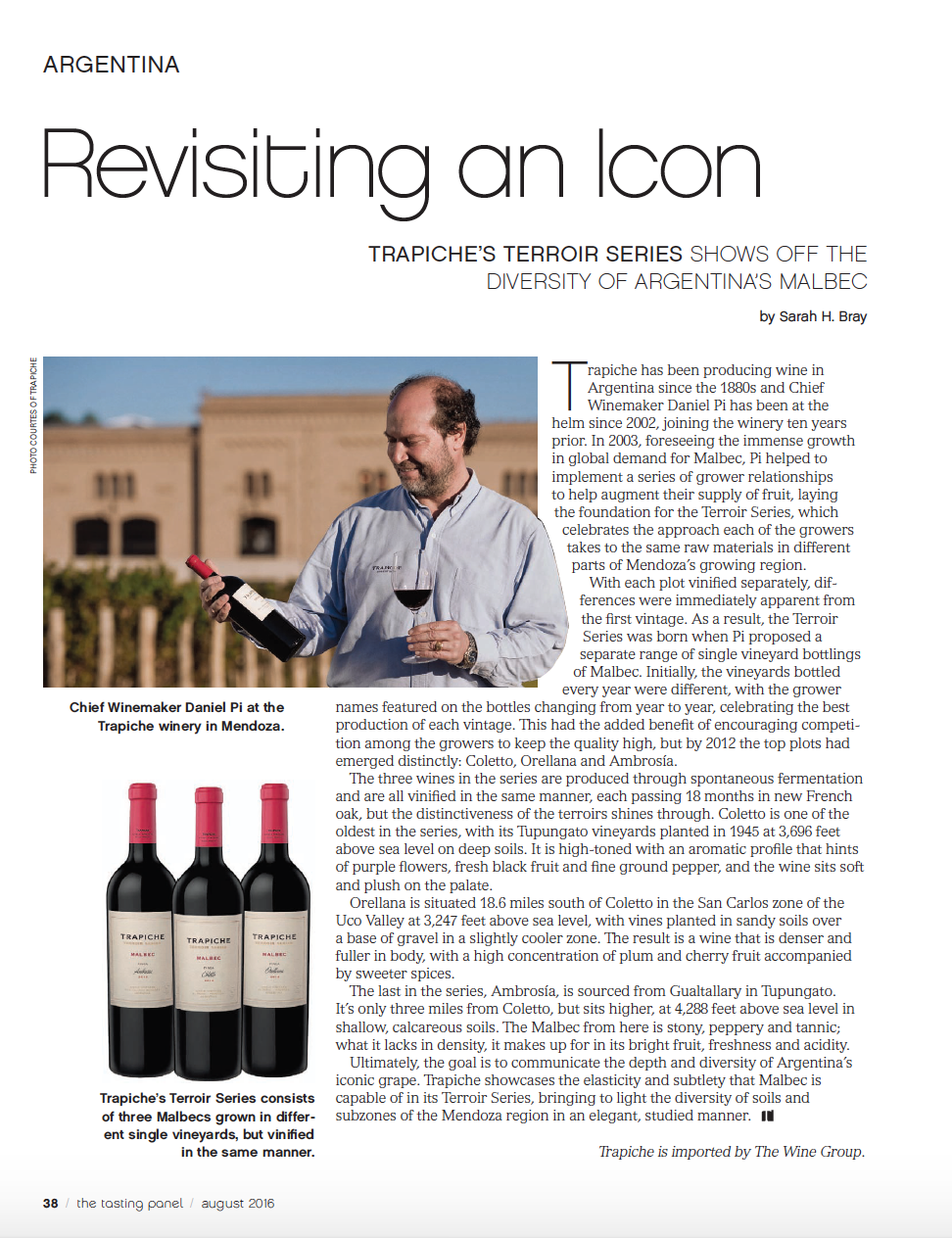Argentinian producer Trapiche showcases the elasticity and subtlety that Malbec is capable of in its Terroir Series, bringing to light the diversity of soils and subzones of the Mendoza region in an elegant, studied manner. My latest for The Tasting Panel.

Trapiche has been producing wine in Argentina since the 1880s and Chief Winemaker Daniel Pi has been at the helm since 2002, joining the winery ten years prior. In 2003, foreseeing the immense growth in global demand for Malbec, Pi helped to implement a series of grower relationships to help augment their supply of fruit, laying the foundation for the Terroir Series, which celebrates the approach each of the growers takes to the same raw materials in different parts of Mendoza’s growing region. With each plot vinified separately, differences were immediately apparent from the first vintage. As a result, the Terroir Series was born when Pi proposed a separate range of single vineyard bottlings of Malbec. Initially, the vineyards bottled every year were different, with the grower names featured on the bottles changing from year to year, celebrating the best production of each vintage. This had the added benefit of encouraging competition among the growers to keep the quality high, but by 2012 the top plots had emerged distinctly: Coletto, Orellana and Ambrosía.
The three wines in the series are produced through spontaneous fermentation and are all vinified in the same manner, each passing 18 months in new French oak, but the distinctiveness of the terroirs shines through. Coletto is one of the oldest in the series, with its Tupungato vineyards planted in 1945 at 3,696 feet above sea level on deep soils. It is high-toned with an aromatic profile that hints of purple flowers, fresh black fruit and fine ground pepper, and the wine sits soft and plush on the palate.
Orellana is situated 18.6 miles south of Coletto in the San Carlos zone of the Uco Valley at 3,247 feet above sea level, with vines planted in sandy soils over a base of gravel in a slightly cooler zone. The result is a wine that is denser and fuller in body, with a high concentration of plum and cherry fruit accompanied by sweeter spices.
The last in the series, Ambrosía, is sourced from Gualtallary in Tupungato. It’s only three miles from Coletto, but sits higher, at 4,288 feet above sea level in shallow, calcareous soils. The Malbec from here is stony, peppery and tannic; what it lacks in density, it makes up for in its bright fruit, freshness and acidity.
Ultimately, the goal is to communicate the depth and diversity of Argentina’s iconic grape. Trapiche showcases the elasticity and subtlety that Malbec is capable of in its Terroir Series, bringing to light the diversity of soils and subzones of the Mendoza region in an elegant, studied manner.
